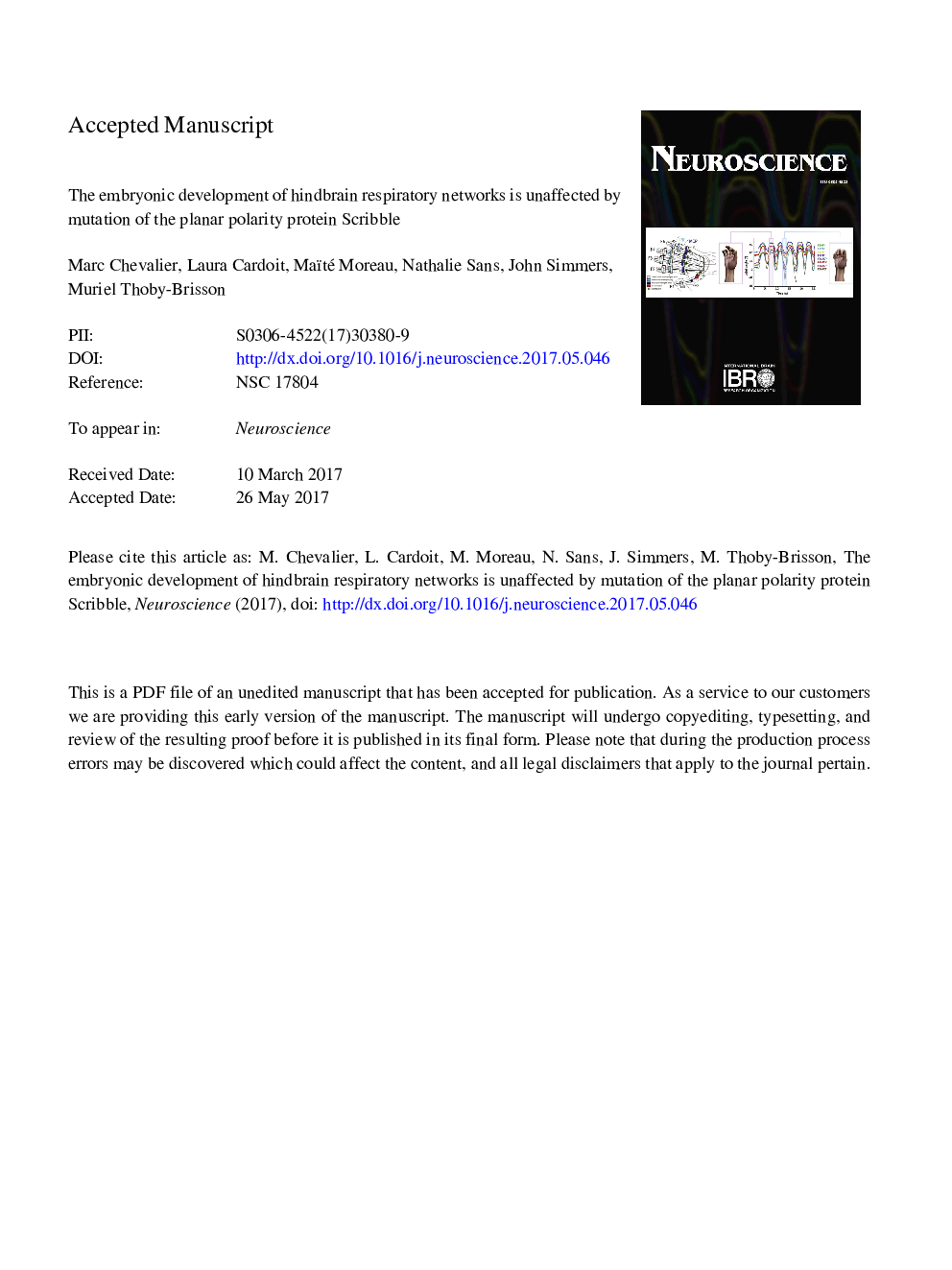| Article ID | Journal | Published Year | Pages | File Type |
|---|---|---|---|---|
| 5737826 | Neuroscience | 2017 | 33 Pages |
Abstract
The central command for breathing arises mainly from two interconnected rhythmogenic hindbrain networks, the parafacial respiratory group (pFRG or epF at embryonic stages) and the preBötzinger complex (preBötC), which are comprised of a limited number of neurons located in confined regions of the ventral medulla. In rodents, both networks become active toward the end of gestation but little is known about the signaling pathways involved in their anatomical and functional establishment during embryogenesis. During embryonic development, epF and preBötC neurons migrate from their territories of origin to their final positions in ventral brainstem areas. Planar Cell Polarity (PCP) signaling, including the molecule Scrib, is known to control the developmental migration of several hindbrain neuronal groups. Accordingly, a homozygous mutation of Scrib leads to severe disruption of hindbrain anatomy and function. Here, we aimed to determine whether Scrib is also involved in the prenatal development of the hindbrain nuclei controlling breathing. We combined immunostaining, calcium imaging and electrophysiological recordings of neuronal activity in isolated in vitro preparations. In the Scrib mutant, despite severe neural tube defects, epF and preBötC neurons settled at their expected hindbrain positions. Furthermore, both networks remained capable of generating rhythmically organized, respiratory-related activities and exhibited normal sensitivity to pharmacological agents known to modify respiratory circuit function. Thus Scrib is not required for the proper migration of epF and preBötC neurons during mouse embryogenesis. Our findings thus further illustrate the robustness and specificity of the developmental processes involved in the establishment of hindbrain respiratory circuits.
Keywords
PBSVRGVIIEPFScribpFRGNTSaCSFPCP6-Cyano-7-nitroquinoxaline-2,3-dionelateralmouse embryoembryonic dayrostralCNQXdorsal Planar Cell PolaritySubstance Partificial cerebrospinal fluidMedianpre-Bötzinger complexPhosphate-buffered salinenucleus ambiguusnucleus of the solitary tractTrigeminal nucleusFacial motor nucleusHindbrainPrenatal developmentpreBötCCRCScribbleVentral respiratory groupparafacial respiratory group
Related Topics
Life Sciences
Neuroscience
Neuroscience (General)
Authors
Marc Chevalier, Laura Cardoit, Maïté Moreau, Nathalie Sans, Mireille Montcouquiol, John Simmers, Muriel Thoby-Brisson,
